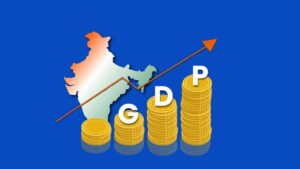New analyses by both the Congressional Budget Office and the U.S. Department of the Treasury suggest the United States is rapidly approaching the date at which the government can no longer pay its bills. History is clear that even getting close to a breach of the U.S. debt ceiling could cause significant disruptions to financial markets that would damage the economic conditions faced by households and businesses.
A continued breach of the U.S. debt ceiling could result in “significant disruptions” to financial markets and “severe damage” to the economy, including more than 8 million job losses, the White House has warned.
In a report published on May 3, the White House Council of Economic Advisers stressed that a historic U.S. default on its debt obligations—referred to as the “X-date”—is fast approaching, and such a move would see the economy “quickly shift into reverse.” The warning comes just days after Treasury Secretary Janet Yellen said the United States could default on its financial obligations as early as June 1 unless Congress takes action to raise the nation’s $31.4 trillion debt ceiling.
White House economists warned of three possible scenarios that would likely happen if negotiations between Republicans and Democrats regarding the debt limit are further prolonged: brinksmanship, a short default, and a protracted default.
Under the first scenario, in which the limit is approached but a default is avoided, 200,000 jobs could be wiped out and 0.3 percentage points would be knocked off the annual GDP, and the unemployment rate would rise by 0.1 percentage points.
In a short default, in which Congress acts swiftly to allow the nation to borrow again after defaulting, roughly half a million jobs would be lost, 0.6 percentage points would be knocked off the annual GDP, and the unemployment rate would rise by 0.3 percentage points.
Under a protracted default, the most dangerous scenario in which the U.S. fails to raise its borrowing levels for more than three months, roughly 8.3 million jobs would be wiped out, unemployment would increase 5 percentage points as consumers cut consumption and businesses lay off workers, and GDP would plunge by 6.1 percentage points.
‘On Par With the Great Recession’
The result would be an “immediate, sharp recession” on par with the Great Recession while the stock market would also fall by an estimated 45 percent, economists found. “A protracted default would likely lead to severe damage to the economy, with job growth swinging from its current pace of robust gains to losses numbering in the millions,” economists wrote. “Unlike the Great Recession and the COVID recession, the government is unable to help consumers and businesses. As the breach continues, the economy heals slowly, and unemployment is still 3 percentage points higher at the end of 2023.”
“While policymakers have thus far, in the long history of our Nation, avoided inflicting such damage on the American and even global economies, virtually every analysis we have seen finds that default leads to deep, immediate recessionary conditions,” economists wrote.
The White House projections are similar to a recent Moody’s Analytics report which used a different model of the macro economy but arrived at a similar conclusion, noting that the economic downturn that would ensue would be “comparable to that suffered during the global financial crisis.”
Biden and Republicans have been in a deadlock over the debt limit and government spending, with the administration refusing to make spending cuts until the debt limit is raised.
Risks of a Brief Default
Mark Zandi, Chief Economist of Moody’s Analytics, has predicted that even with a brief default, a “crisis, characterized by spiking interest rates and plunging equity prices, would be ignited. Short-term funding markets, which are essential to the flow of credit that helps finance the economy’s day-to-day activities, likely would shut down as well.” Right after a default, Fitch Ratings reports that “the US’s rating would be moved to “‘RD’ (Restricted Default) and affected Treasury securities would carry a ‘D’ rating until the default was cured.”
According to Moody’s even a short debt limit breach could lead to a decline in real GDP, nearly 2 million lost jobs, and an increase in the unemployment rate to nearly 5 percent from its current level of 3.5 percent. Moody’s also notes that even a short debt limit breach could lead to lastingly higher interest costs: “If Treasury securities are no longer perceived as risk-free by global investors, future generations of Americans would pay a steep economic price.” A Brookings analysis noted that losing the unparalleled safety and liquidity of the Treasury market due to default could translate into over $750 billion in higher federal borrowing costs over the next decade.





















